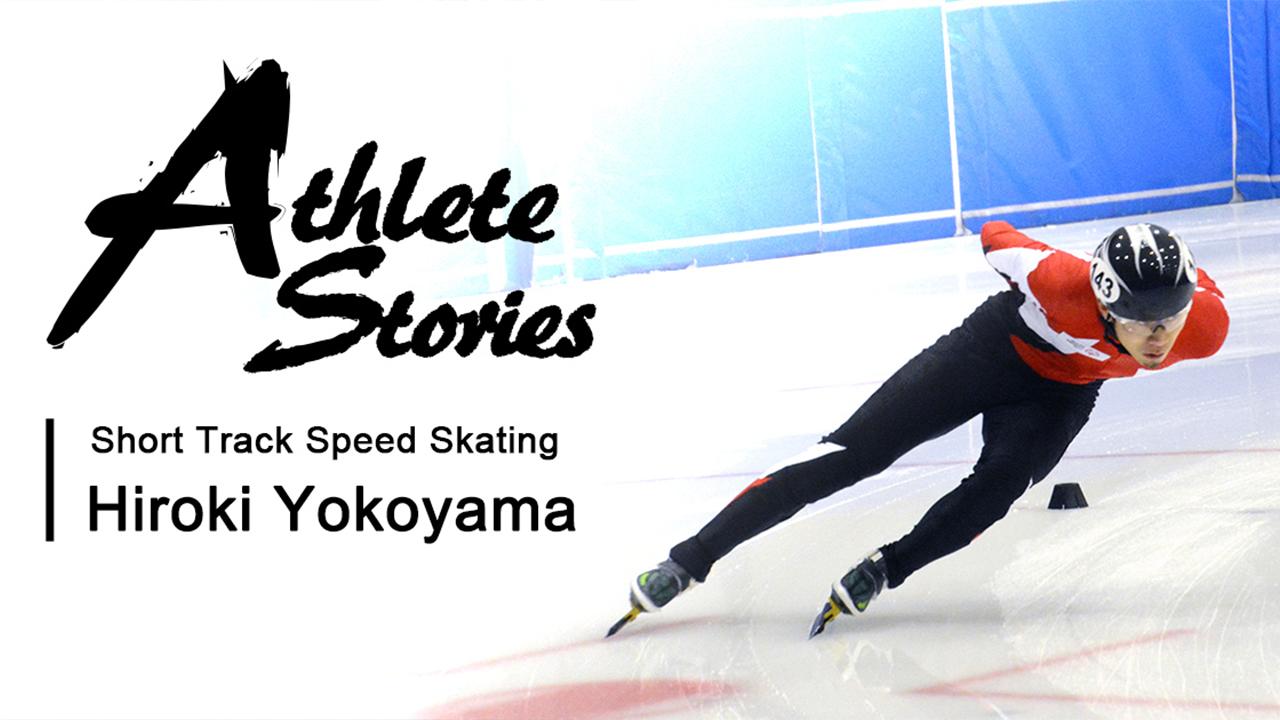
How many people know the difference between speed skating and short track speed skating (short track)?

※The article has been published in Toyota Global Newsroom on April 24, 2019.
Short track speed skater Hiroko Yokoyama, 24, works in Toyota Motor Corporation’s Material Engineering Division No. 1.
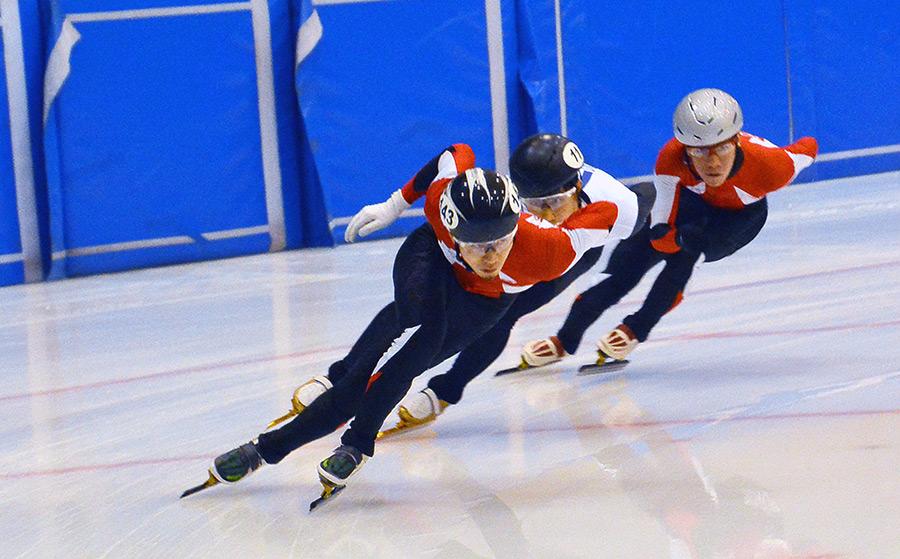
How many people know the difference between speed skating and short track speed skating (short track)?
Speed skating involves two skaters at a time racing on a 400-meter oval track to see who can record the fastest time; short track features a smaller, 111.12-meter oval with multiple (four to six) skaters starting at the same time to see who can cross the finish line first. As short track competitors juggle numerous tactics and strategies, and go to extremes such as how they lean into curves at high speed, it would not be unfair to call short track “keirin* on ice”.
*Keirin is a type of bicycle racing in which multiple track cyclists sprint toward the goal line following a speed-control start behind a pacer vehicle. It is currently an Olympic Game event.
All members of Toyota’s skating squad are short track skaters. The squad even includes three members of Japan’s national short track team, including Sumire Kikuchi, also of Toyota’s Material Engineering Division No. 1, at the PyeongChang 2018 Games. Yokoyama was one of them. On January 10 this year, we paid a visit to Yokoyama at the Teisan Ice Skate Training Centre in Nobeyama City, Nagano Prefecture, where he was training just before the All Japan Short Track Speed Skating Championships.
Genuinely enjoying the world stage
Yokoyama started sports when he was a child, such as gymnastics, long-distance running, tennis, swimming, and even ice hockey.
When asked how started skating, he replied with typical Kansai (an area in western Japan) wit, saying: “I was so young at the time that I really don’t remember. But I heard from my parents that, when I was about two years old, they told me: ‘Wouldn’t you feel ashamed when you someday had a girlfriend and didn’t even know how to skate?’ With that, they apparently took me skating. Well, we’re all Kansai people, you know, so I think that was probably half a joke. Rather than me getting a girl, it got me to the level at which the girls could get me. (Laughs.)”
But it was a teacher at a skating school when he was in his fourth year in elementary school that led him to pursuing short track.
“I loved going fast, and I would just skate wildly out of control. (Laughs.) So, a teacher angrily scolded me once, saying ‘You’re dangerous. If you want to go that fast, why don’t you take up speed skating!’ And then the teacher introduced me [to people in speed skating].”
While he searched for a rink where speed skating was possible, the nearest one was so far away that commuting was out of the question. So, without much choice, Yokoyama decided to go with short track. He joined a local club where he could skate as he liked, eventually improving at short track.
However, he had to switch rinks after his normal rink in Kobe closed down, and the new one in Osaka had a more formalized training routine.
“At my club in Kobe, members would arrive just before the start of practice and then go straight at it without warming up first. But the club in Osaka had a thorough warm-up regimen and did strength training before we got on the ice, so, at first, I was already worn out by the time I entered the rink.”
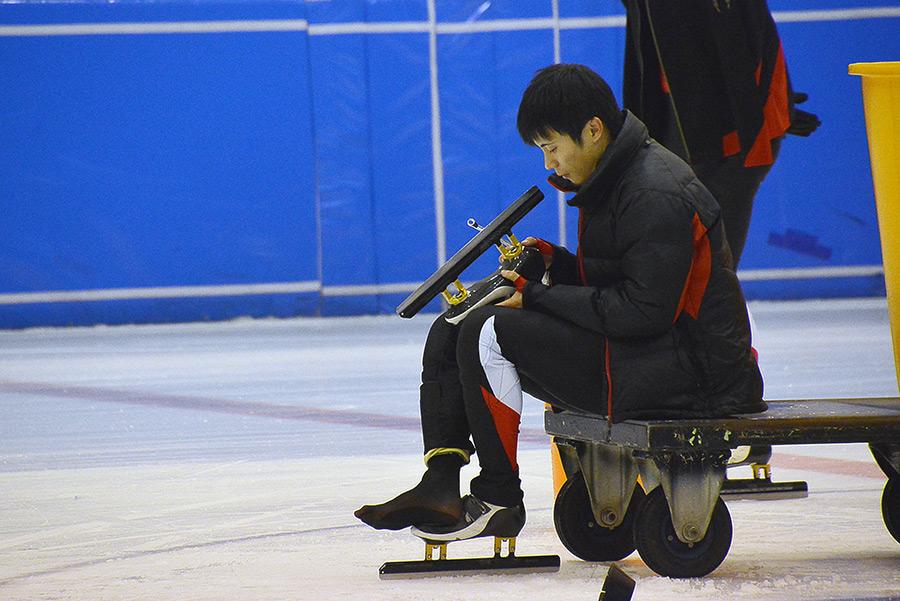
With the tougher practice regimen came better results. Yokoyama was selected to represent Japan in the Asian Open Short Track Speed Skating Trophy (an Asian-region international competition), marking the first time for him to don a team uniform that bore Japan’s flag. But, even so, he was still a wet-behind-the-ears junior high schooler. While the powerful South Koreans were demonstrating their might, Yokoyama was simply and genuinely enjoying his first appearance on the world stage.
“It was just a bunch of fun. I was thinking things like: ‘Man, those guys are unbelievable!’ and ‘Wow, that’s fast!’ And I felt that I wanted to one day be able to keep up with them.”
Later, Yokoyama would come to realize anew the need “to make skating fun”.
Reaching for the next level
Yokoyama, smaller than others at the time, would always be at the front when skaters lined up in single file in ascending order. “When an instructor would tell us to space ourselves (by stretching out our arms forward), I never had anyone in front of me to stretch out to,” said Yokoyama, in a somewhat self-tormenting tone.
Short track is a contest of speed. Being small and light doesn’t provide any advantages. The smaller one is, the smaller the first step, and one can simply lose due to not having the power needed to boost speed enough to make up for the deficit.
But, after Yokoyama entered his third year of junior high, he hit a growth spurt, allowing him to eventually rise to the point where he could even win in national meets. From there, he progressed from racing in Japan to competing on the world stage. In his first year in high school, he was designated as an alternate on Japan’s national team for the World Junior Short Track Speed Skating Championships. That was followed, in his second year of high school, by becoming a Japanese-squad regular in the same competition a year later. Finishing in seventh place in the 1,500 meters, the experience demonstrated that although he could make it through the preliminaries without much trouble, he still had a long way to go when going up against the world’s best in the finals.
For two more years, Yokoyama continued to represent Japan in the same competition, but his results became even less promising. While Yokoyama was steadily improving, the top-level skaters seemed to be growing by leaps and bounds. To win in the global arena, he had to find a way to take his game to the next level.
“It was around then that I became keenly conscious of competing on the world stage, and I found that I really wanted to win,” explained Yokoyama.
Something clicked during the Winter Universiade (an international event organized for university athletes that includes competitors who graduated from university less than two years earlier), when Yokoyama was in his second year in university. He finished fourth in both the 500 meters and the 1,500 meters, and, in the 500 meters, he improved his personal best by about one full second.
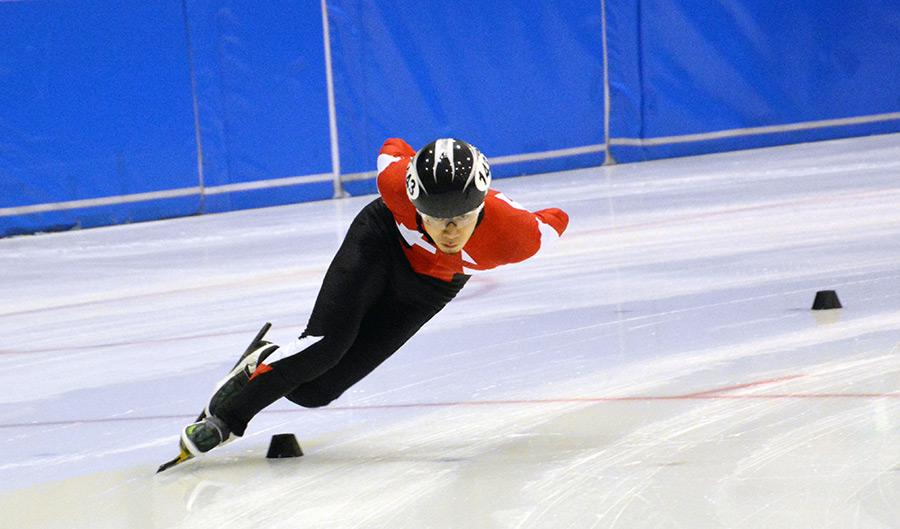
“Although I didn’t really change anything much, it was the instance that I grasped how to use my body during a race,” said Yokoyama.
That particular instance came just as Yokoyama was speeding into a curve in the 500 meters. Curves in short track are regularly attacked at 40 to 50 kilometers per hour. Because even the smallest of mistakes can send a skater smashing out to the edge of the rink, Yokoyama, who said he usually never had any fears about speed, admitted that, considering the condition of both himself and the ice on that day, he was a bit afraid.
But that didn’t stop him. “I had usually entered a curve in a slightly defensive way. But I realized that, if I didn’t go on the offensive, there wouldn’t be any meaning in me being in the race. So, as I went into the curve, I leaned over to the inside in a big way, and that allowed my skates to bite into the ice. And that was just what was needed,” explained Yokoyama.
After that, Yokoyama’s results kept getting better. He went on, as still a second-year university student, to win the overall title at a national meet, and, then, as a third-year university student, he snatched an overall win at the All Japan Short Track Speed Skating Championships. He then joined Japan’s national team and was selected to represent Japan in the Short Track Speed Skating World Cup, which consists of competitions held around the world, and in the World Short Track Speed Skating Championships.
You can only really win if you enjoy it.
In the December of his fourth year at university, Yokoyama suffered a bruise to his ribs when he fell after bumping with another skater in the fourth round of the Short Track Speed Skating World Cup in Shanghai. To recover, he lightened his training load, but he suddenly fell into a slump. In the following January, he placed a mere 15th overall in the All Japan Short Track Speed Skating Championships, despite having been the reigning champion. Furthermore, he was cut from the Japan roster for the Short Track Speed Skating World Cup.
“I couldn’t figure out what was wrong. Regardless of how much I practiced, it didn’t make a difference. It was then that I had thought for the first time ever that skating wasn’t any fun,” recalled Yokoyama.
Although Yokoyama did eventually make step-by-step progress toward regaining his former condition, he wasn’t quite there yet when he entered his final meet as a university student. In the 1,500 meters, which was considered to be one of his strengths, Yokoyama, due, perhaps, to two unlucky encounters with debris on the ice in a row (a rare event for skaters), was not able to place better than fifth.
The final race of the meet for Yokoyama was the 3,000 meters, which featured the competition’s overall top eight skaters. Yokoyama was determined to give it his all.
“It was my last competition for me to don my university’s name on my uniform, so I felt that I had to leave a mark,” said Yokoyama.
In long short track races, theory holds that the opening and early stages be skated at a slow pace. However, Yokoyama suddenly burst forward from the group to lap all the other skaters. Yokoyama, for whom the longer the distance the better, shot forward again another full lap ahead of the competition. In the end, he crossed the goal line an astounding two and a half laps ahead of the pack. Finally, victory was once again his.
“It was then that I realized that you have to make skating fun. I think, previous to that, I had been dwelling too much on thinking that I had to win,” said Yokoyama.
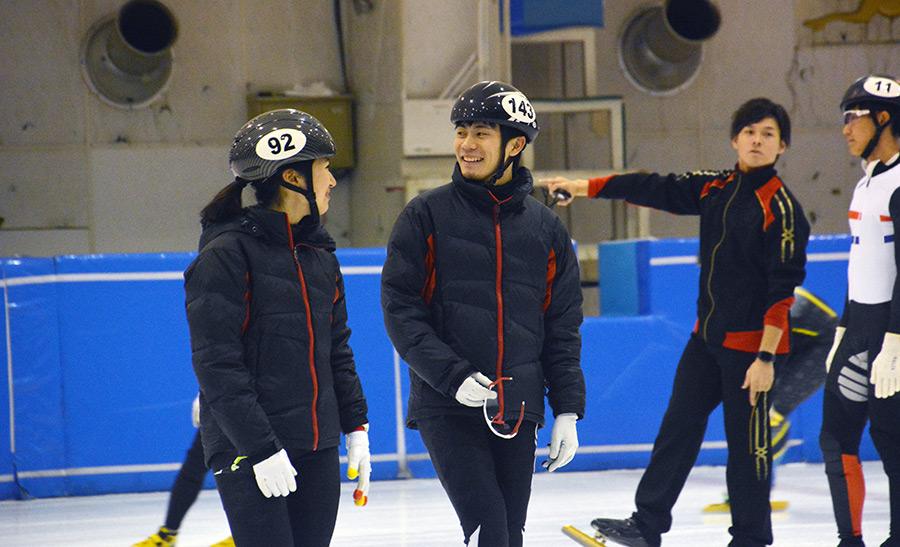
If things could only always go well. On the first day of the All Japan Short Track Speed Skating Championships this year on January 12, we found a closed-fisted and vexed Yokoyama, following his bid in the semifinal of the 1,500 meters. Just as he was trying to squeeze out from an inside course, he had come in contact with the skater in front of him, causing them to fall. Yokoyama was written up for interference and was disqualified. Before the event, Yokoyama was saying how he wanted to win in front of all his Toyota supporters. Perhaps what happened was due, just as when he was in his slump, to thinking too much that he had to win.
However, that was not the end for Yokoyama in that meet. The following day, he found victory in the 3,000 meters, with a wide gap between him and the second-place finisher. That boosted him in the overall standings from ninth place to third.
For athletes, the desire to win is only natural. But the pressure one puts on oneself and whether one is able to enjoy the process that can lead to victory have a big effect on the outcome. Maybe it’s the same as life—those who enjoy it are the winners.
Quality over quantity
Since last year, Yokoyama has based his training in the Netherlands, where he takes part in training for the Dutch national team. While the Netherlands has long been a speed skating powerhouse, it has, in recent years, also grown strong in short track. As such, Yokoyama, who already has his sights set on the Beijing 2022 Games, believes that training in the Netherlands could provide him with some clues for his own growth.
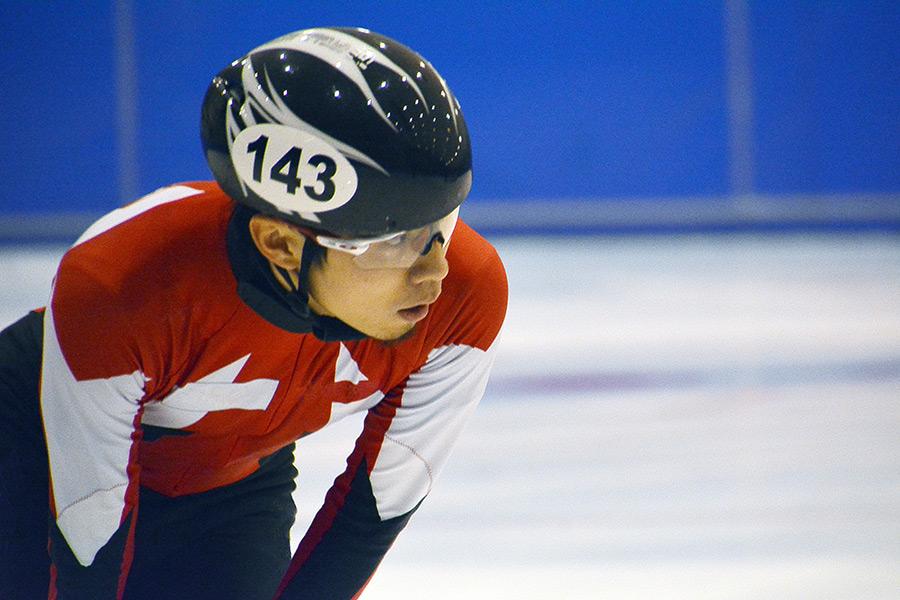
Having been eliminated in the 1,500-meter preliminaries at PyeongChang 2018, Yokoyama’s first Olympic Game experience left him with an unpleasant aftertaste. “After everything I had gone through to get ready, it all ended in only two minutes. You can’t even make a cup of instant noodles in that time. (Laughs.) But it made me strongly want to get another chance on the ultimate stage, to skate [in the Olympic Games] again, and to prepare even better so that I cannot fail, especially because it all happens in an instant,” said Yokoyama.
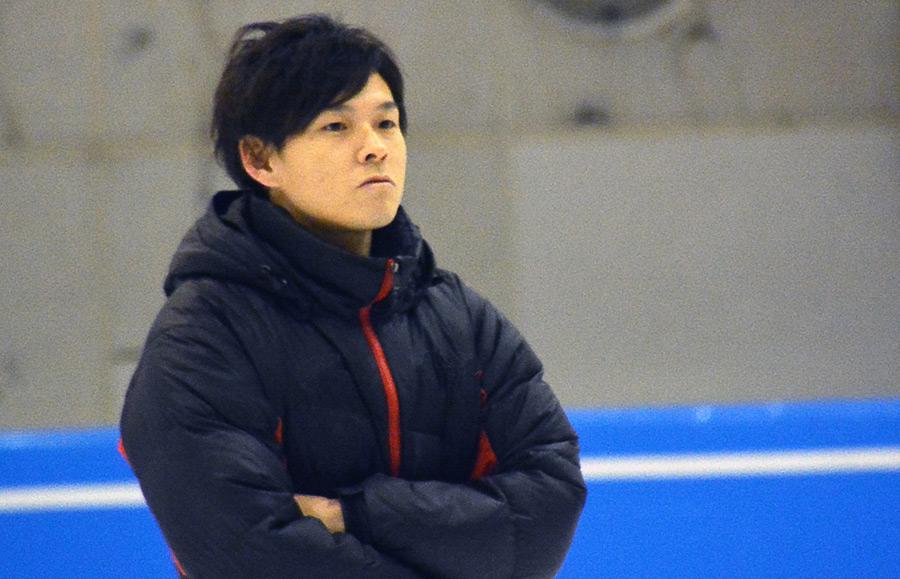
To win in the Olympic Games, Yokoyama would have to change how he has been doing things, and he would have to change himself. But Yokoyama’s drive has grown stronger than ever, and Coach Yuzo Takamido has sensed the change.
“Recently, especially after PyeongChang 2018, Yokoyama has been more determined to change himself and to take in many different things. Although he excels at skating at varying speeds, he’ll have to learn how to continually do that to win at the world level. And he also needs to build his body so that it doesn’t come out the loser when bumping into (bigger) overseas skaters,” said Takamido.
When training in Japan, Yokoyama would set a rhythm of rigorous and not-so-rigorous training, switching back and forth every other week. But in the Netherlands, he undergoes medium-burden training every day for a month and a half, followed by a week off. Then, the routine is repeated. Yokoyama complained about the completely different training schedule, worrying that it would negatively affect his stamina. But Coach Takamido told him that was where he should try to find a way to make things happen.
“The top Dutch skaters do a lap about 0.2 seconds faster than Yokoyama. I think he always needs to be aware that it’s not about the quantity of training but the quality,” said Takamido.
Quality over quantity. Within a limited amount of time, thinking for yourself how to do something, applying ingenuity, and seeing things all the way through to achieve huge results at the end… It seems that what holds true in the world of business also applies to sports.
Head Coach Satoru Terao of the Toyota Sports & Corporate Citizenship Department, himself a former Olympian, says that his aim in relocating training to the Netherlands was to raise the level of Japan’s overall competitive ability.
“I think it’s important how we implement in Japan what is learned in the Netherlands, such as about the training environment and training regimens. We then need to add our own unique character and become better (than those from whom we have learned). I think that’s our big mission,” explained Terao.
Yokoyama and Japan’s short track world are now in the stage of planting the seeds for the future. We look forward to their further growth and active roles.
Profile
Date of birth
February 18, 1994
Place of birth
Marugame City, Kagawa Prefecture (moved to Kobe before the age of 2)
Alma maters
Kwansei Gakuin Junior High School, Kwansei Gakuin Senior High School, Kwansei Gakuin University
Nickname
Yoko
Family
Father, mother

